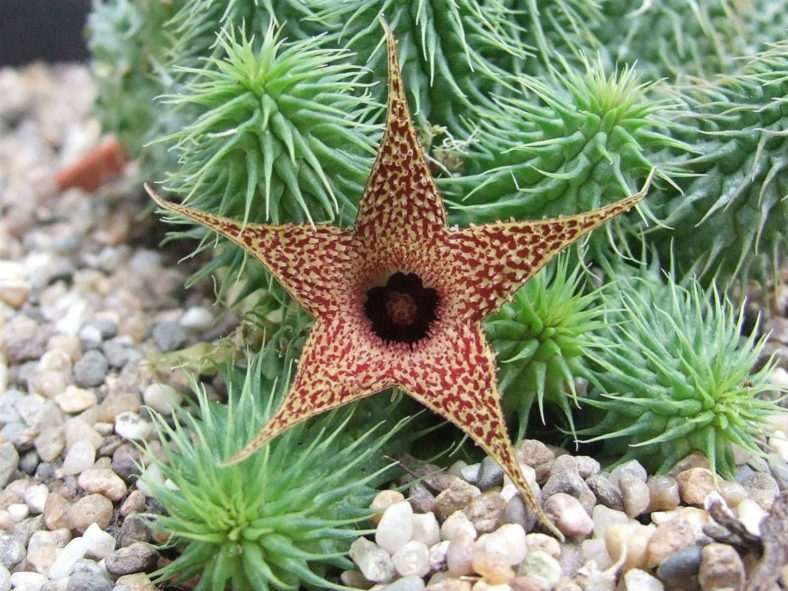Huernia is a genus of perennial stem succulents from Eastern and Southern Africa and Arabia. They are not members of the Cactus family, although the tubercles, warty protrusions that line the stem ridges, can resemble the fierce spines that protect cacti.
General Cultivation
Huernias can be grown as intriguing indoor, greenhouse, or summer patio container plants almost anywhere. Species such as Huernia zebrina, Huernia pillansii, Huernia keniensis, and Huernia primulina can be grown in outdoor landscapes in warm winter and Mediterranean climates. Protect outdoor plants from frost and rain during winter and full sun in summer. Plant enthusiasts worldwide grow Huernias because of their interesting stem shapes and colors and the often intricate and fascinating flower forms and colors.
Soil Conditions
Huernias require a potting mix with excellent drainage. A mix of 50 percent pumice or perlite, 25 percent peat or organic mulch, and 25 percent sand helps prevent rotting and overwatering. Roots experience dieback in cool-season dormancy, so plants grow best in shallow containers that allow the soil to dry out quickly. Using clay pots further helps the soil from staying too wet. Outdoor plantings do well in raised beds.

Light and Temperature
Huernias prefer bright light or partial shade. In nature, they grow underneath shrubs or other plants. Too much sun causes stems to develop protective reddish or purple pigmentation and can scald the stems. Too little light leads to weak, thin growth with decreased flower production. These succulents grow best between 50 and 80 °F (10 and 27 °C). Protect them from freezing weather. They can tolerate down to 40 °F (4.5 °C) when dormant if they are kept dry and temperatures over 100 °F (38 °C) if not in full sun.
Watering
Plants should be kept dry during the dormant winter season. When Huernias are actively growing, they need to be watered. Allow the soil to dry one inch (2.5 cm) down the container between waterings. In regions with highly mineralized water, use rainwater or water from reverse osmosis units to prevent minerals from building up in the soil.
Fertilizing
During the growing season, high-phosphorous, low-nitrogen fertilizers can be applied at half-strength once a month. Alternatively, small amounts of blood and bone meals can be mixed into potting soil at the beginning of the growing season. No fertilizers should be given during the dormant season.
Pests
Mealybugs are the most serious threat to plant health. These insects suck the sap from the plant stems and roots, seriously weakening or killing the lifesaver plants. Control the mealybugs with systemic insecticides. Examine plants weekly for signs of infestation and treat them promptly. Keep plants from becoming too crowded so stems can be easily seen.
Source: sfgate.com
Links
- Back to genus Huernia
- Succupedia: Browse succulents by Scientific Name, Common Name, Genus, Family, USDA Hardiness Zone, Origin, or cacti by Genus